5 Exciting Engineering Challenges for Kids
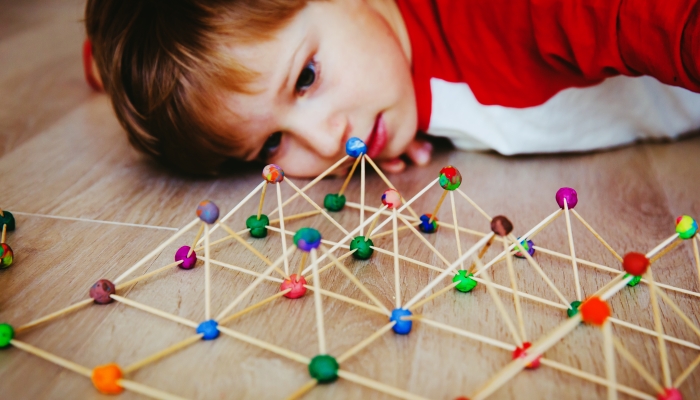
- STEM projects engage your children in hands-on learning which helps them in other important areas, like fine motor skills and literacy.
- Fun science and engineering STEM activities are easy to do with materials you already have in your kitchen, art supply box, or toy chest.
- Even very young children can explore science and technology with these simple STEM activities and projects.
You want to encourage your child’s love of STEM (science, technology, engineering, and math) learning but the cost of some STEM kits and pre-assembled engineering projects on the market can be staggering.
However, you don’t have to spend a fortune on expensive LEGOs, science kits, and STEM projects—you have lots of items in your home that you can use for super fun, super cheap and easy engineering activities that your kids will love to do.
Grab some glue and cardboard and explore our exciting STEM engineering challenges to inspire your kids’ love of science, math, and engineering.
1: Recycled Objects Cardboard Maze
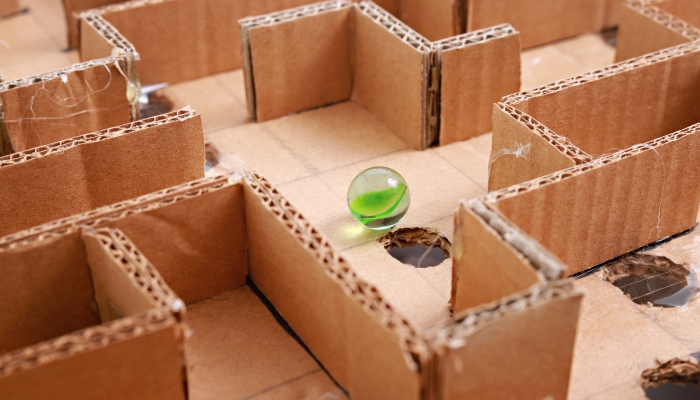
Have some simple, frugal fun with this cardboard maze engineering activity from hello, Wonderful, using tubes, cartons, boxes, and anything else your child’s imagination and curiosity can create. This is a good STEM project for kids who love learning through art activities too.
You Will Need:
- Shallow cardboard box
- Scissors
- Glue and tape
- Recyclables like cardboard tubes, egg cartons, plastic bottles, styrofoam pieces, or anything else your child thinks will make an interesting addition
- A marble, ping pong ball, or other small ball
How It Works:
Set out your box and supplies. Ask your kids to look at all the objects and to design and build a maze using recycled items. Challenge them to think of obstacles they can make for a ball to go through.
For extended learning, ask your kids to sketch their maze ideas first.
Help children with cutting or altering the tubes, bottles, and cartons to make the obstacles in the maze. Use glue and tape to attach items to the maze.
Encourage kids to experiment with different shapes, forms, and designs. When the maze is ready, run the ball through it.
Experiment with different rolling objects, like toy cars, to see how they navigate through the maze.
Learn Skills and Concepts:
This fun STEM project allows your children to creatively build on their engineering ideas. There is no “right” way to build the maze. Kids can even build without a plan and still learn about gravity and motion.
This project also emphasizes problem-solving, fine motor skills, and the importance of recycling.
2: Popsicle Stick Catapult
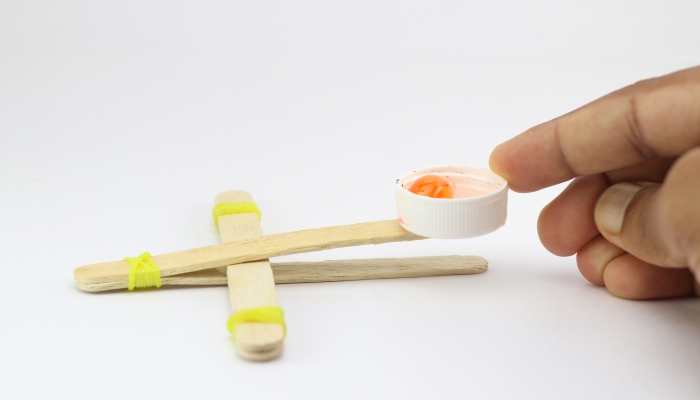
This easy-to-make popsicle stick catapult from Science Buddies is a satisfying STEM project that requires only a few simple items.
You Will Need:
- 8 popsicle sticks
- 5 rubber bands
- Optional plastic spoon for a different variation
- Plastic bottle cap
- Cotton ball or paper to crumple into a ball to catapult
- Glue
How It Works:
First, stack six of the popsicle sticks together, fastening each end of the stack with rubber bands.
Next, attach one stick perpendicular to the top of the stack by crossing two rubber bands in an X to secure it.
Now, make the base of the catapult. Push the last stick through the X of the center rubber bands until it is even with the top perpendicular stick.
Attach the end of the base stick to the top stick with a rubber band. The two sticks should look like a V with the stick stack in the middle.
Now you’re ready to attach the bottle cap to the end of the top popsicle stick. This will hold the cotton ball.
Once dry, put your cotton ball or paper ball in the cap. Push the cap down, let go, and let it fly!
Be sure to use the catapult only with soft objects and in a clear open space.
As an optional project variation, replace the top perpendicular popsicle stick with a plastic spoon attached in the same way to the stick stack and the base. See whether it changes how far the cotton ball can fly through the air.
Learn Skills and Concepts:
Simple STEM machine activities help kids understand basic physics. Talk with your little engineers about projectile motion, how weight affects how far something can fly, and kinetic energy.
3: Marble Roller Coaster
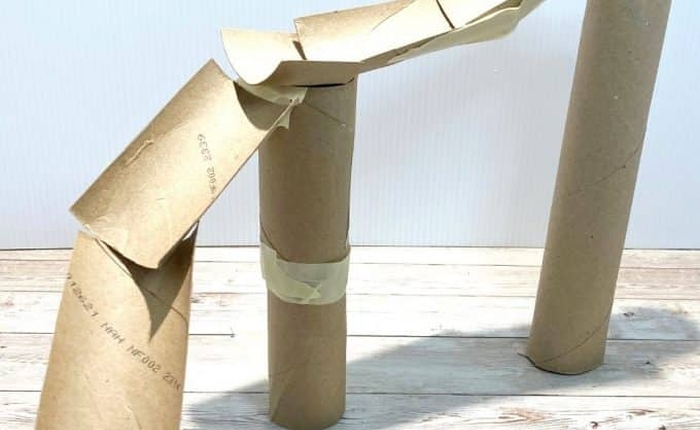
You don’t need to buy an expensive marble run to have a lot of marble fun! Show your kids how to make a marble roller coaster using cardboard tubes and their STEM engineering imaginations.
You Will Need:
- Cardboard tubes
- Tape
- Scissors
- Marbles
- Optional paper plates for a variation
How It Works:
Lay out your cardboard tubes. Choose three tubes as supports. Cut the tubes to different descending lengths to create a slope.
Cut your other tubes in half, longways, to create different track sections.
Use tape to keep your supports in place and to attach your track sections. You may need to experiment and try different things to get the slope and stability right.
Now you’re ready to let the marble go! Encourage your kids to add more sections to their marble roller coaster, more supports for stabilizing, and to change the angles of the inclines to see what happens.
For an optional engineering challenge, add paper plate tracks to your roller coaster like this example from Frugal Fun for Boys.
Learn Skills and Concepts:
Simple STEM engineering projects like this marble run are a fun way to learn about concepts like momentum, incline, gravity, and design.
4: Gumdrop Architecture
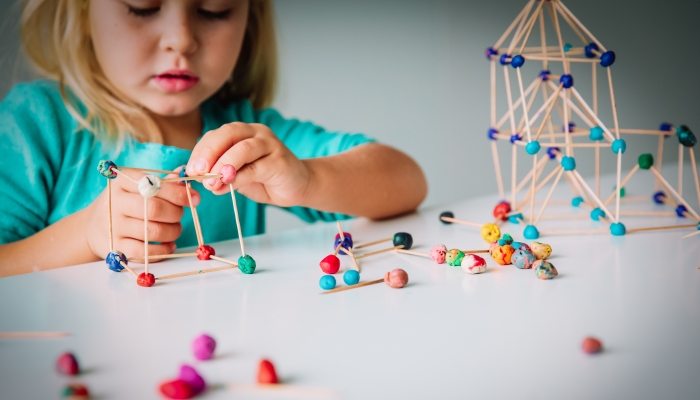
This is the perfect STEM indoor activity or a fun rainy-day engineering project for kids who love to build (and eat candy!). You only need toothpicks and gumdrops or mini marshmallows to create simple, brilliant structures.
You Will Need:
- 10 toothpicks
- 20 gum drops or mini marshmallows
- Optional extra toothpicks and more candy to build bigger structures
How It Works:
Lay out ten toothpicks and 20 gumdrops on a flat surface.
There are several different ways to do this project, depending on your kids’ age, skill, and interest level.
Kids love to freestyle, so as a first step, let them build the strongest structure they can with ten toothpicks and 20 gumdrops.
Next, explain to your kids that some shapes are stronger than others for supporting weight.
Now, take apart the first structures and help them make two pentagons, one for the base and one for the top.
Attach the pentagons by connecting them using the rest of the toothpicks. This should result in triangles between the top and bottom. Take a look at an example from The Homeschool Scientist.
Challenge your kids to build on top of your pentagon structure with more toothpicks and candy pieces. How high can the tower go?
Learn Skills and Concepts:
Building activities are great for shape recognition and fine motor skills. Here kids are also learning about weight distribution and the most stable shapes for building.
5: Building Bridges

For fun trial-and-error STEM engineering projects for inquisitive kids, try building bridges. Challenge children to explore different materials and resources to build the strongest bridge possible.
You Will Need:
- Two blocks or thick hardcover books
- Sheets of paper
- Small toys or pebbles to place on the bridge
- Materials to experiment with like straws, dry spaghetti, cardboard, paper clips, or popsicle sticks
How It Works:
Start by placing the blocks or books a distance apart. Give your kids a piece of paper and ask them to construct a bridge to hold the weight of the pebbles or toys. Small toys work best for this.
Challenge your kids to think of ways to make the bridge stronger. For example, they might try folding the paper several times or folding up the sides of the paper.
Put toys on one at a time to see how many the bridge can hold.
Next, let your kids experiment with different materials to strengthen the bridge through the process of trial and error. How can they use the straws or spaghetti? What works better, paper clips or popsicle sticks?
Test and check each structure to see which one holds the most toys.
Learn Skills and Concepts:
STEM engineering activities like this are all about the process of experimentation, as well as learning about shapes and materials that make strong bridges.
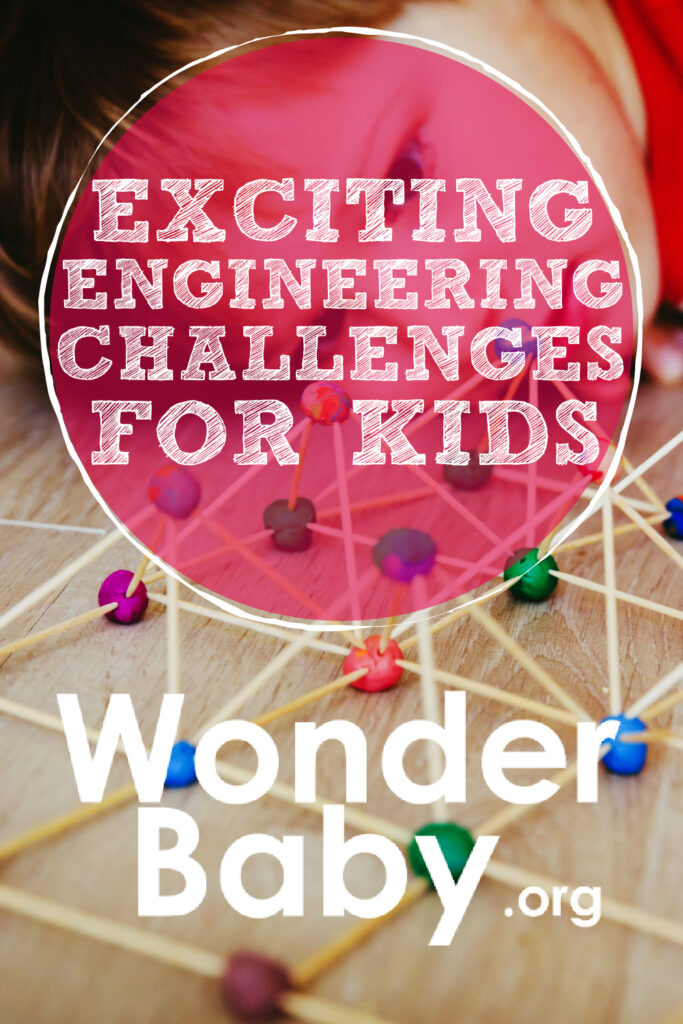
Related Posts
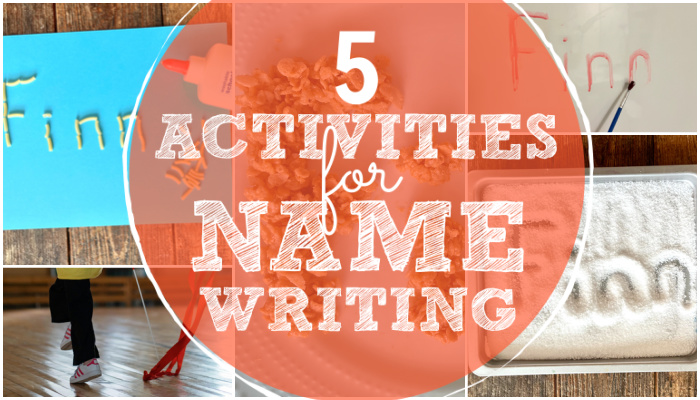
Braille and Literacy
5 Activities for Name-Writing
Learning to write your name is an important preschool skill. Make the task fun with one of these 5 activities for name-writing!
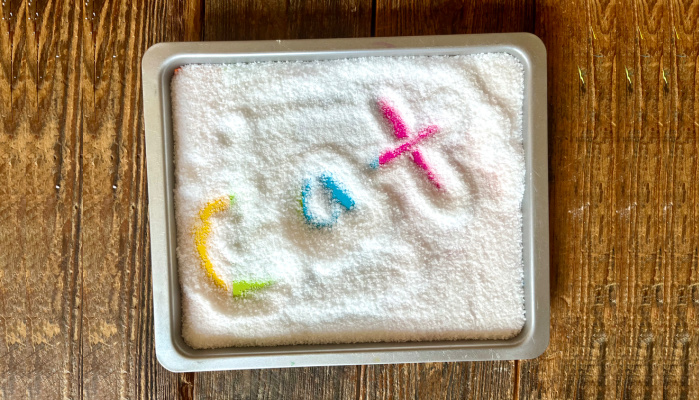
Braille and Literacy
Color Surprise Salt Tray for Handwriting Practice
Salt trays are the perfect tool for making handwriting practice more exciting. This color surprise salt tray will delight even the most reluctant writer.

Math and Science
4 Weather Activities for Preschoolers
Whether the weather is sunny, cloudy, windy or rainy check out these educational weather activities for preschool that your children will love!